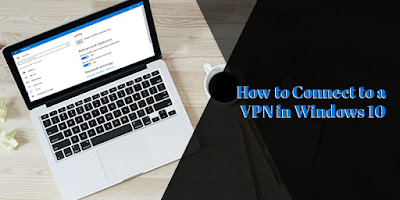How to Connect to a VPN in Windows 10 | The Software Blogs
The technology and internet always help us grow both personally and professionally. Virtual Private Network or VPN has become an essential need for companies, which want to expand globally. You can use the VPN service on Windows10 PC for both office and personal use, and by using the detailed instructions given below in this article, you can connect to a VPN on your Windows 10 PC with ease. A VPN, or Virtual Private Network, is a kind of private network connection that facilitates encryption and transmission of data during its travel from one place to another on the web.
VPN service helps you connect to the internet to surf websites with advanced privacy and security as well as gain access to restricted websites and get over the censorship blocks. VPNs are not only for PC, desktops, or laptops, but you can also set up a VPN on an iPhone, iPad, or Android phone.
Create a VPN profile
In case you are new to the world of advanced internet tools like VPN and don’t have any existing VPN profile, then you will have to create one ahead of using the VPN service. There are two methods to create a VPN profile. The first is, creating a VPN profile on your own, and the second is to set up a work account to get a VPN profile from your company.
Things need to be done before creating a VPN profile
In case you want to create a VPN profile for your workplace, find the VPN settings or a VPN app on your company’s intranet website whenever you’re at work, or reach out to your company’s support agent.
In case you want to create a VPN profile for your personal use, go to Microsoft Store to look out if there is any program for that service, then visits the VPN service’s website to inspect whether the VPN connection settings to utilize are already mentioned in the list.
- Choose the Start option, then tap Settings > Network & Internet > VPN > Add a VPN connection.
- When you get a redirection to Add a VPN connection, follow these steps:
- To open a VPN provider, select Windows (built-in).
- In the Connection name box, type a name you can remember so that you can easily recognize the VPN you have created.
- In the empty tabs for the Server name or address, enter the address for the VPN server.
- For VPN type, select the type of VPN connection you want to create. You’ll have to check the type of VPN connection your organization or VPN service prefers to use.
- To Type of sign-in info, select the type of sign-in information (or credentials) to use. It can be a username and password, one-time password, certificate, or a smart card in case you’re connecting to a VPN for work. Type your username and password in the respective spaces (in the case is the need of the hour.)
- Choose the Save option for saving the file.
- In case you need to edit the VPN connection information or specify additional settings, like the proxy details settings, choose the VPN connection and then select Advanced options.
Connect to a VPN
Now, you have a VPN profile; you’re ready to connect it with your devices.
- On the right-hand side of the taskbar, select the Network icon.
- Choose the VPN connection you would like to use, then go any of the following depending on what happens when you select the VPN connection:
- In case the Connect button appears below the VPN connection, tap the cursor on Connect.
- In case the VPN section in the Settings opens, choose the VPN connection there, then choose Connect.
- In case you see the on-screen instructions, type your username and password.
If you are connected to the VPN, then the VPN connection name will show Connected below it. To look out whether you are connected to the VPN while you are executing things on your PC, choose the Network icon on the right-hand side of the taskbar, then look out whether the VPN connection says Connected.


Comments
Post a Comment